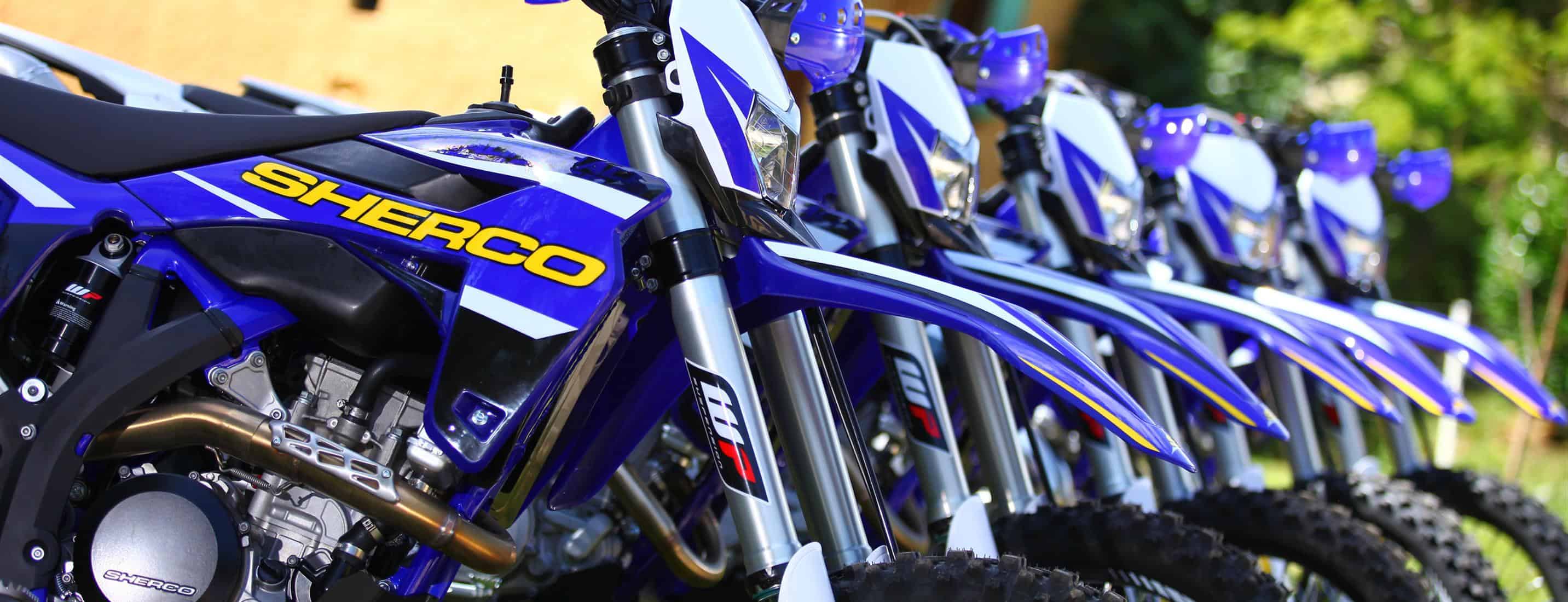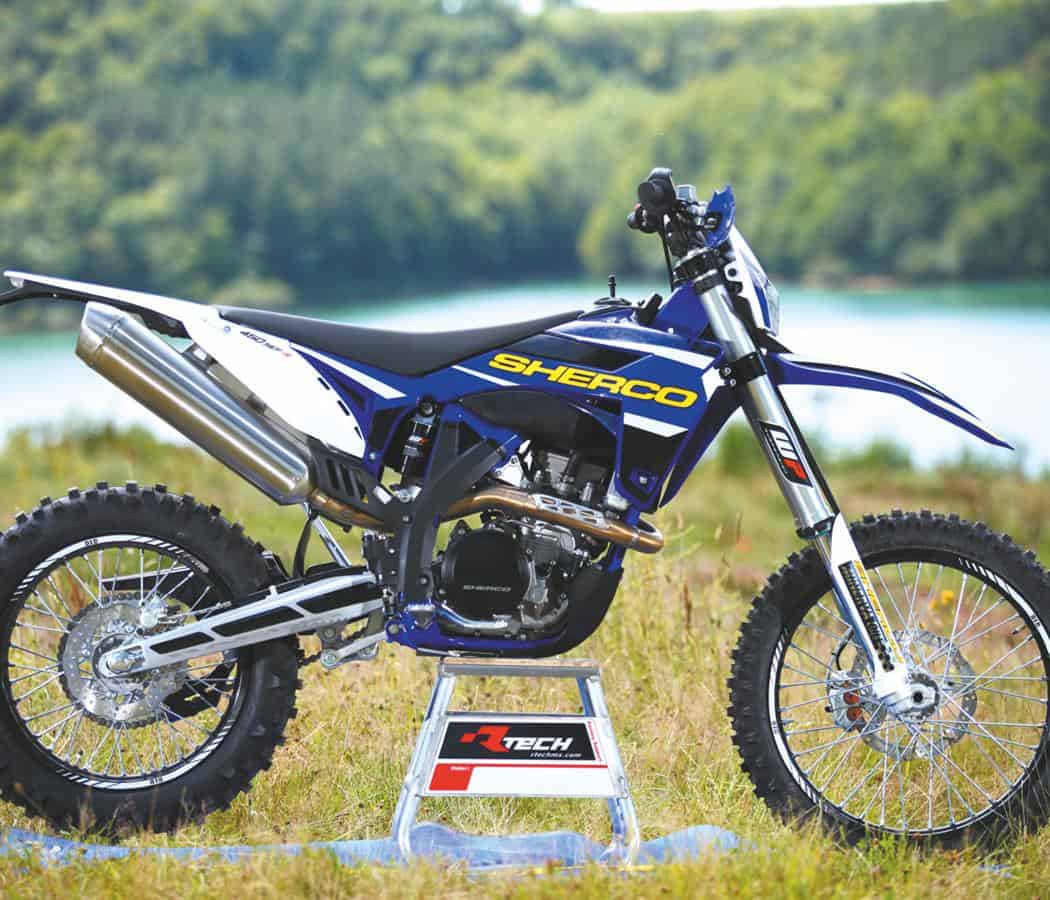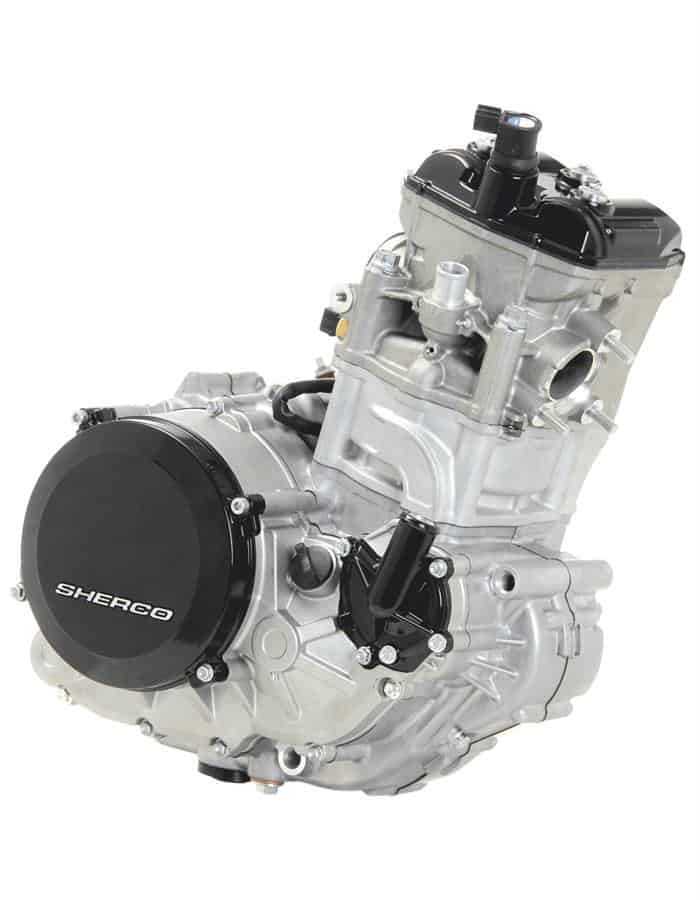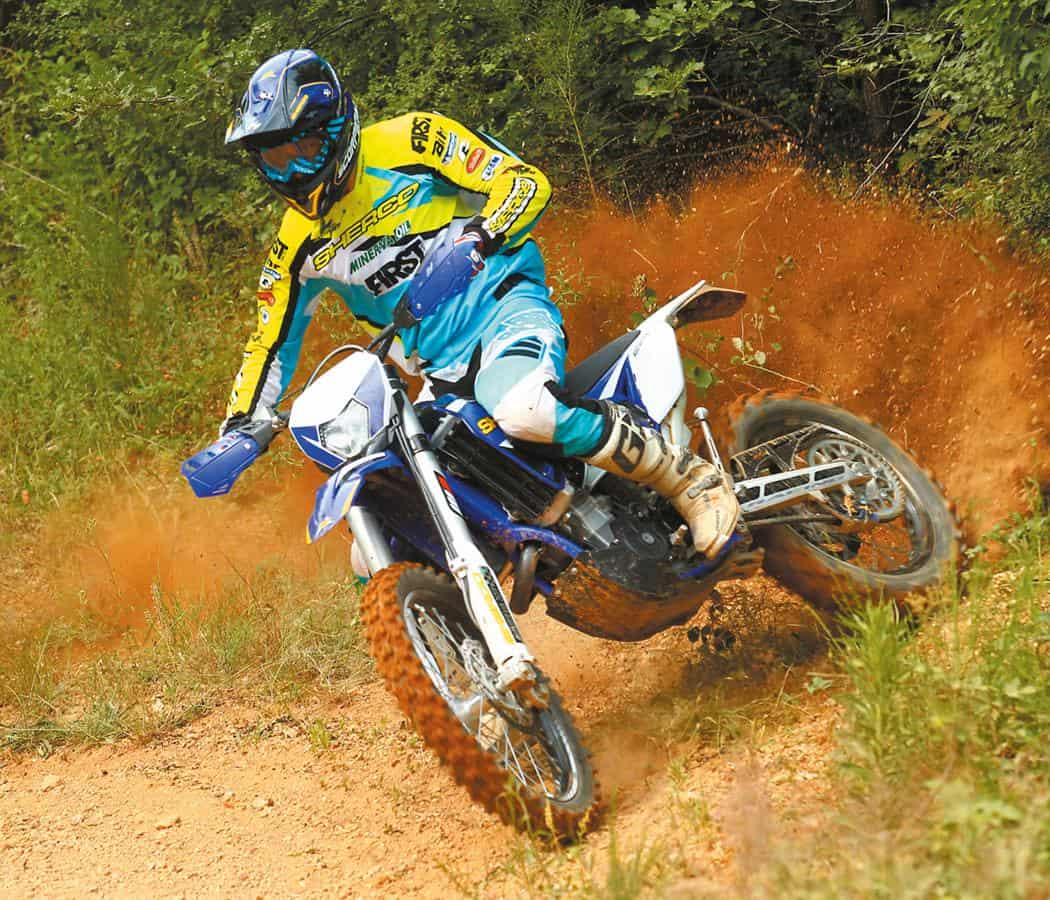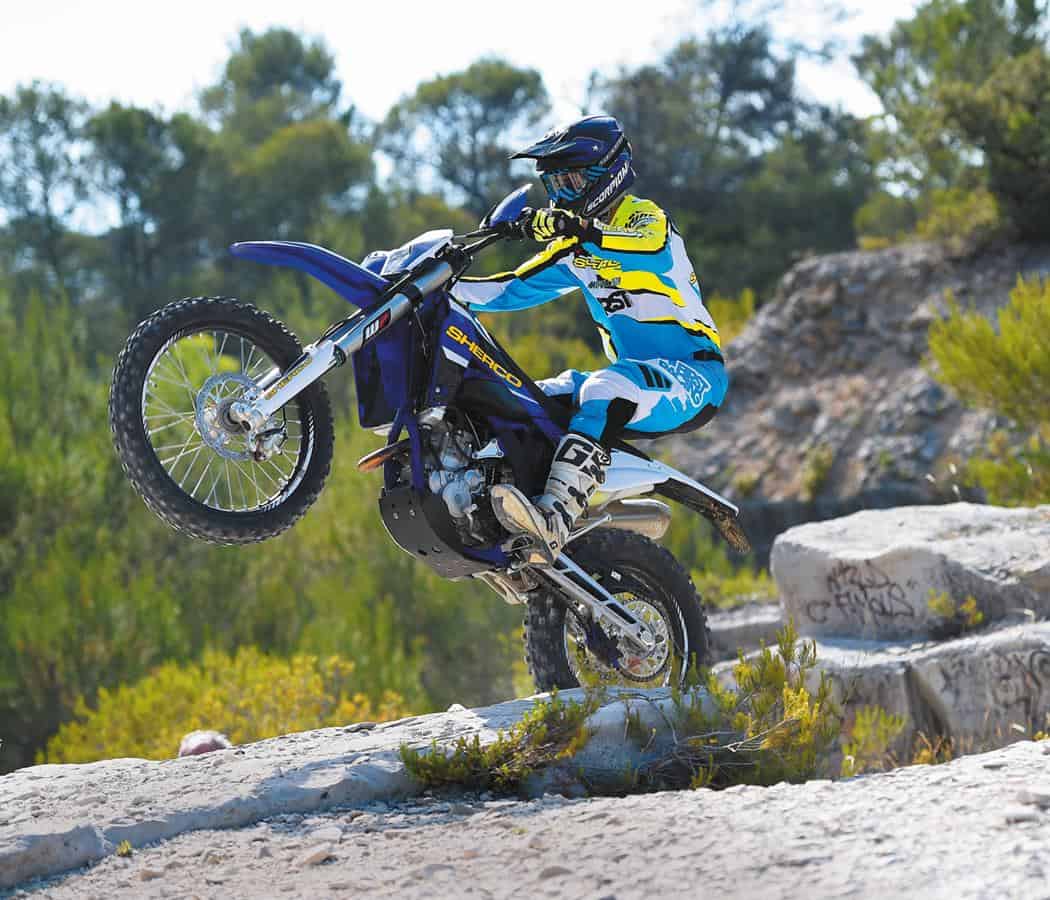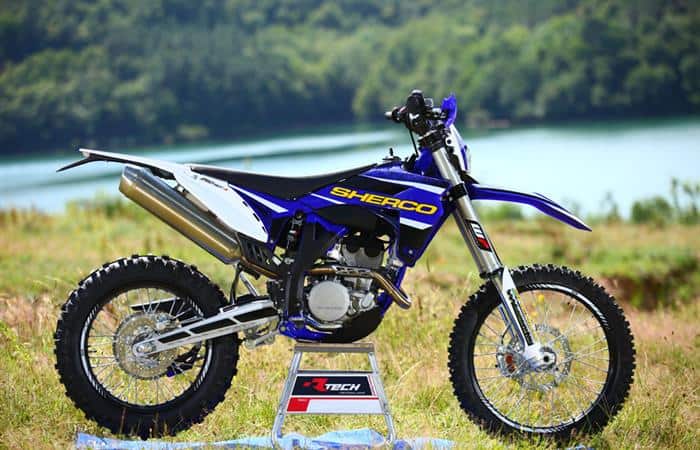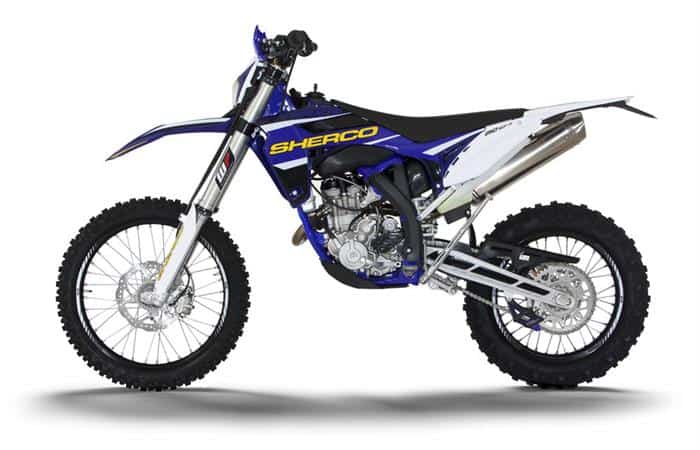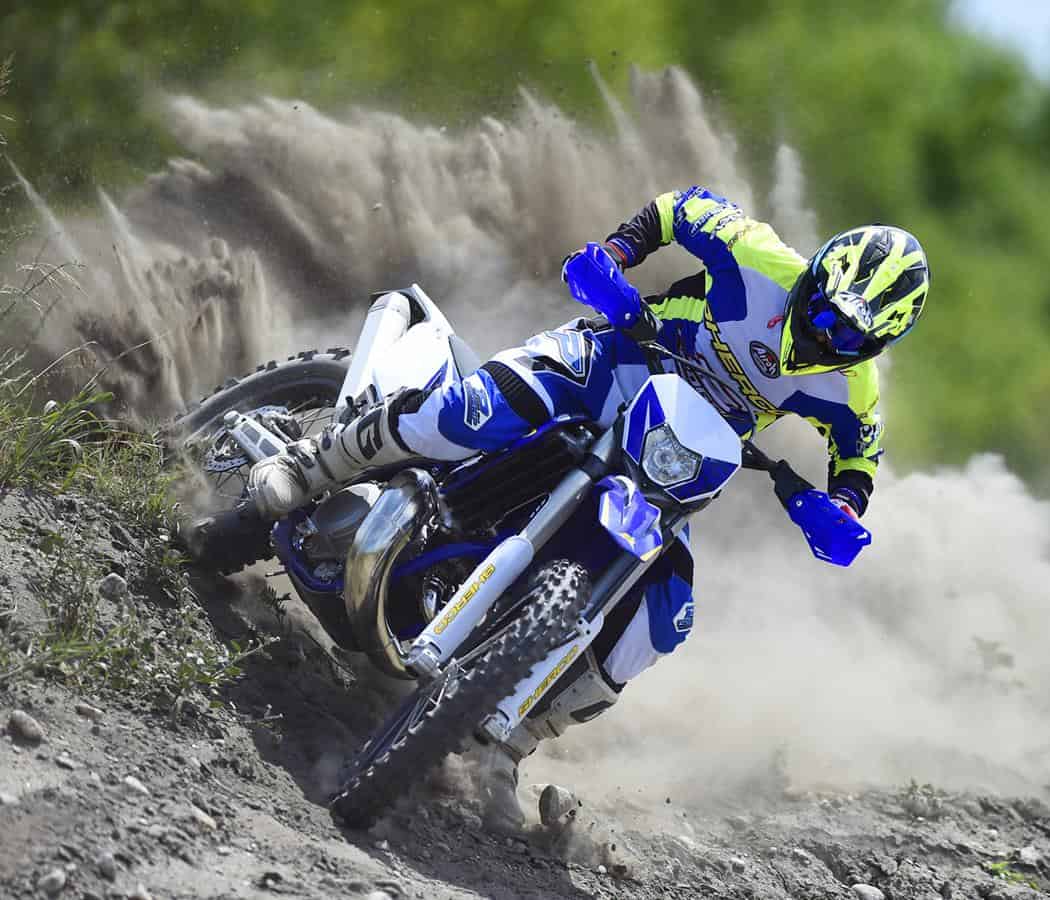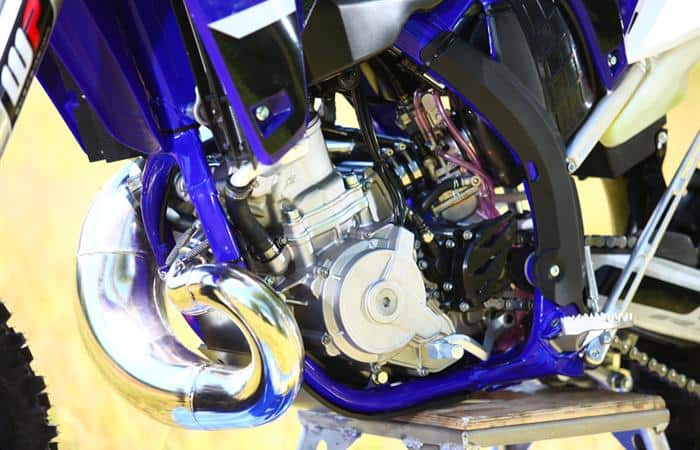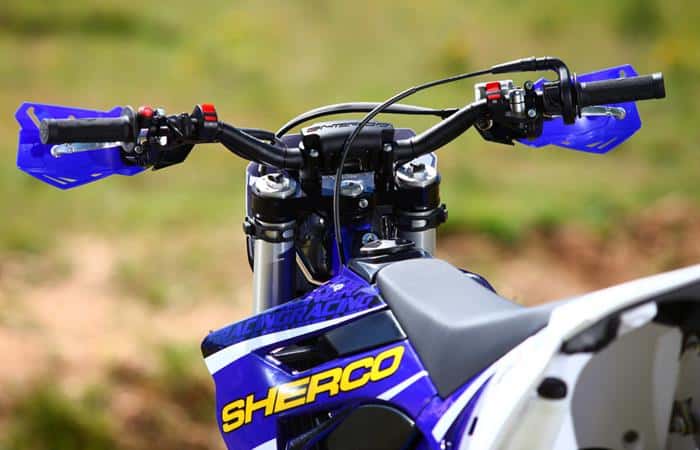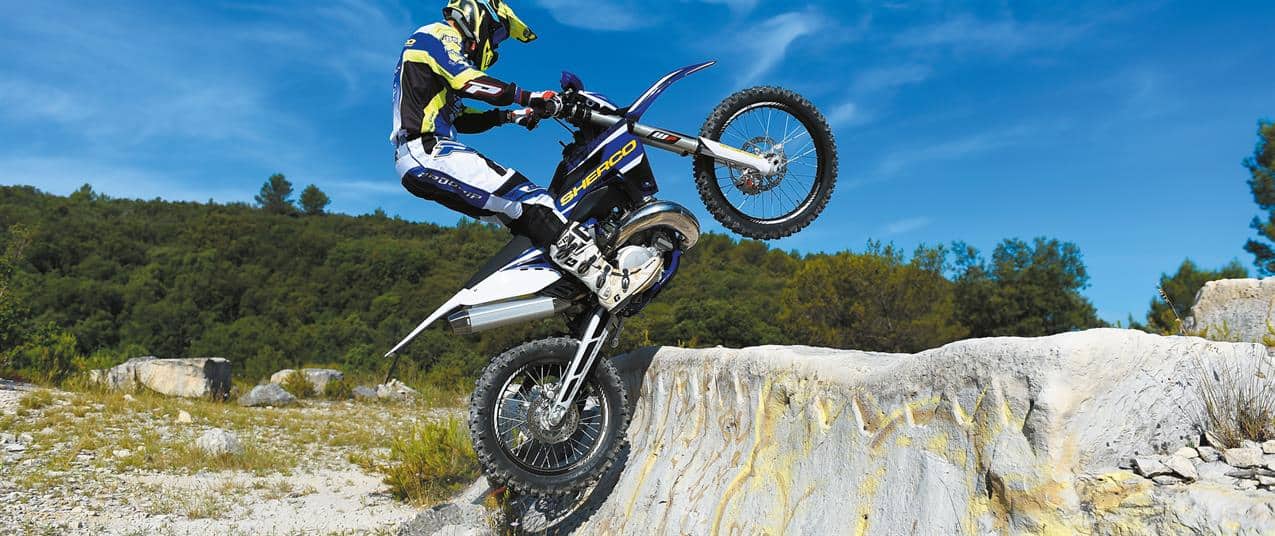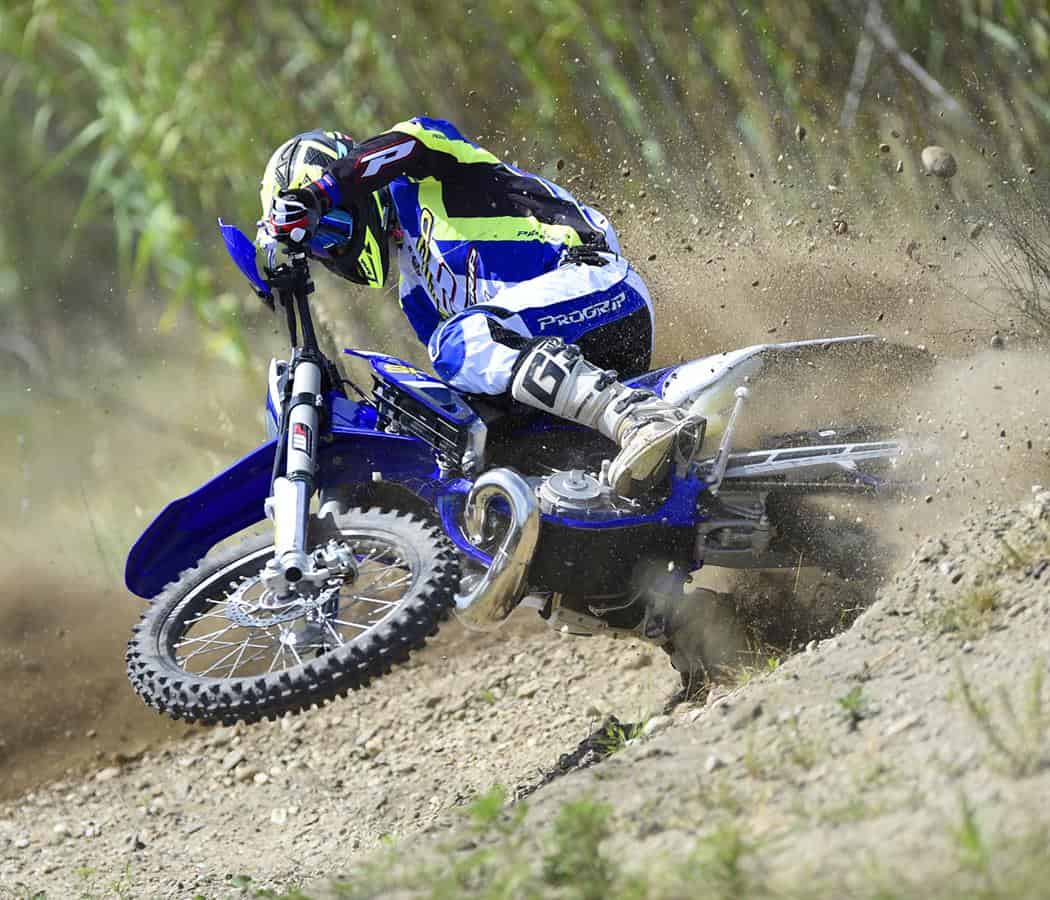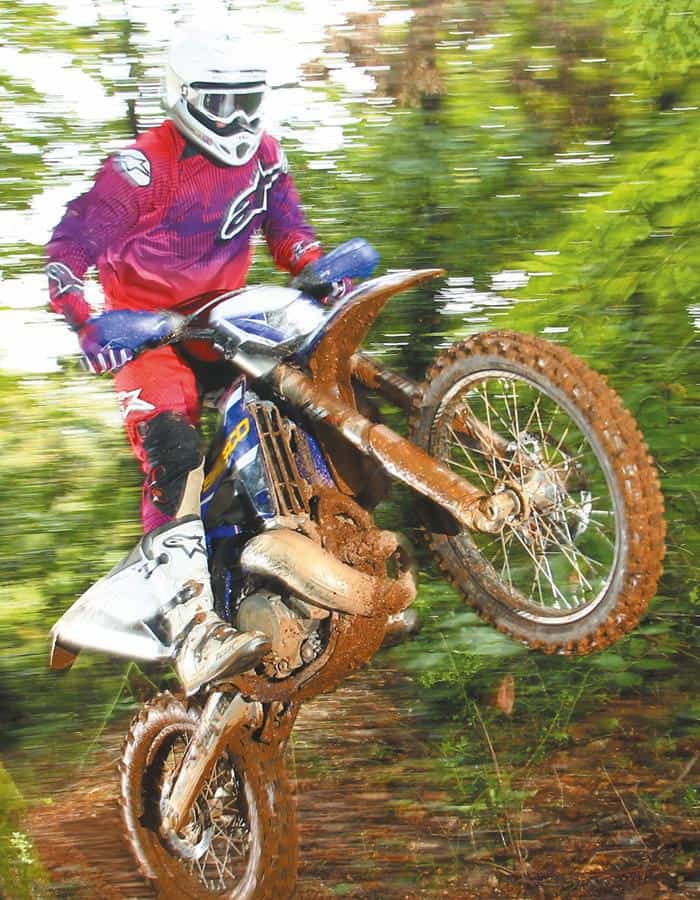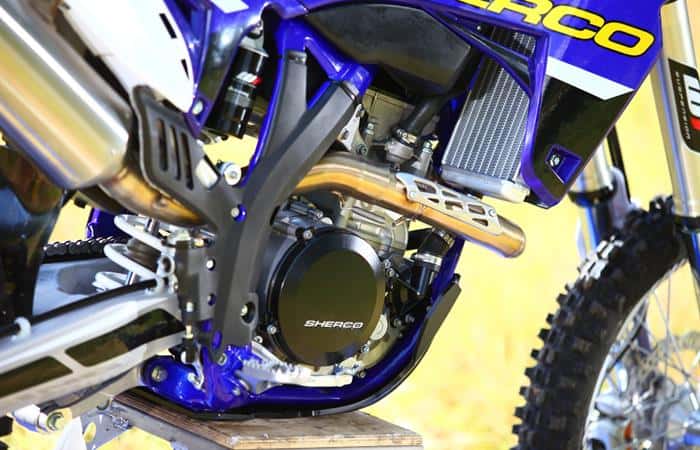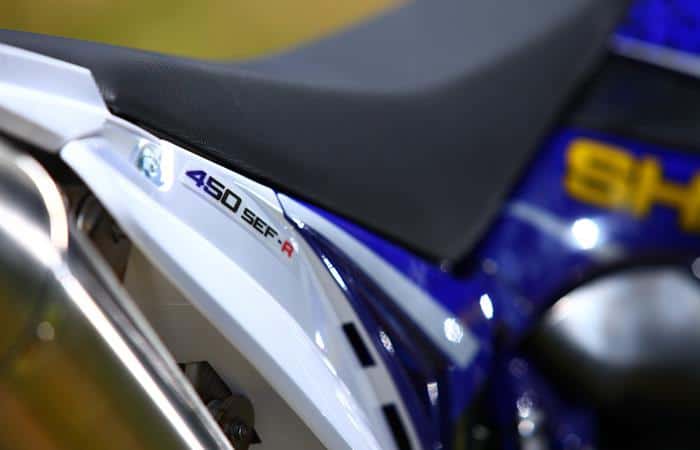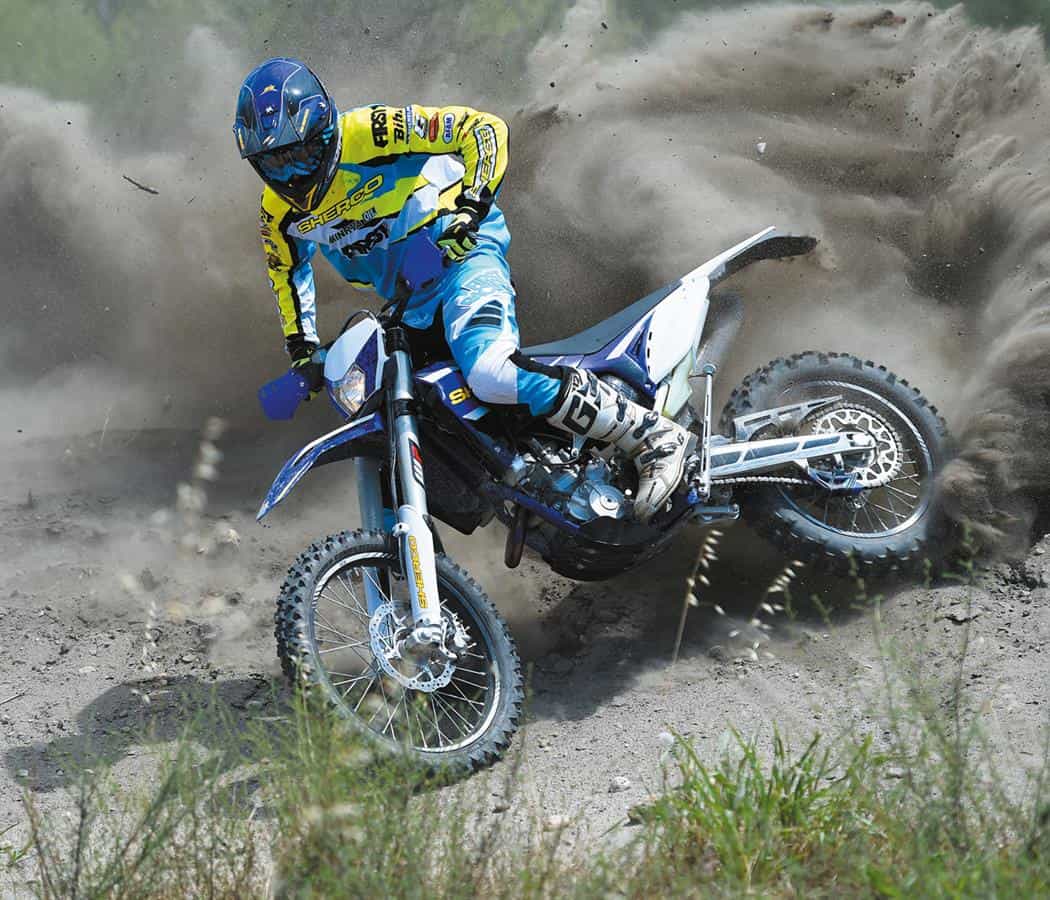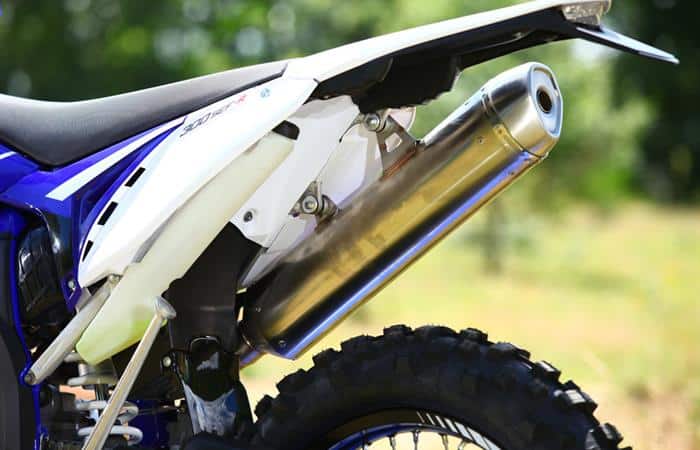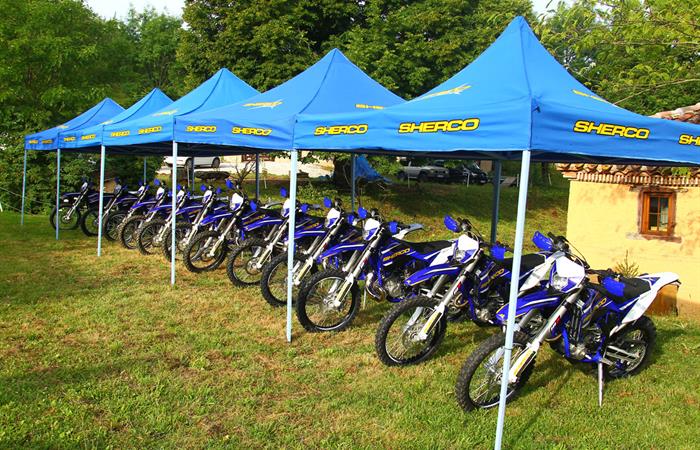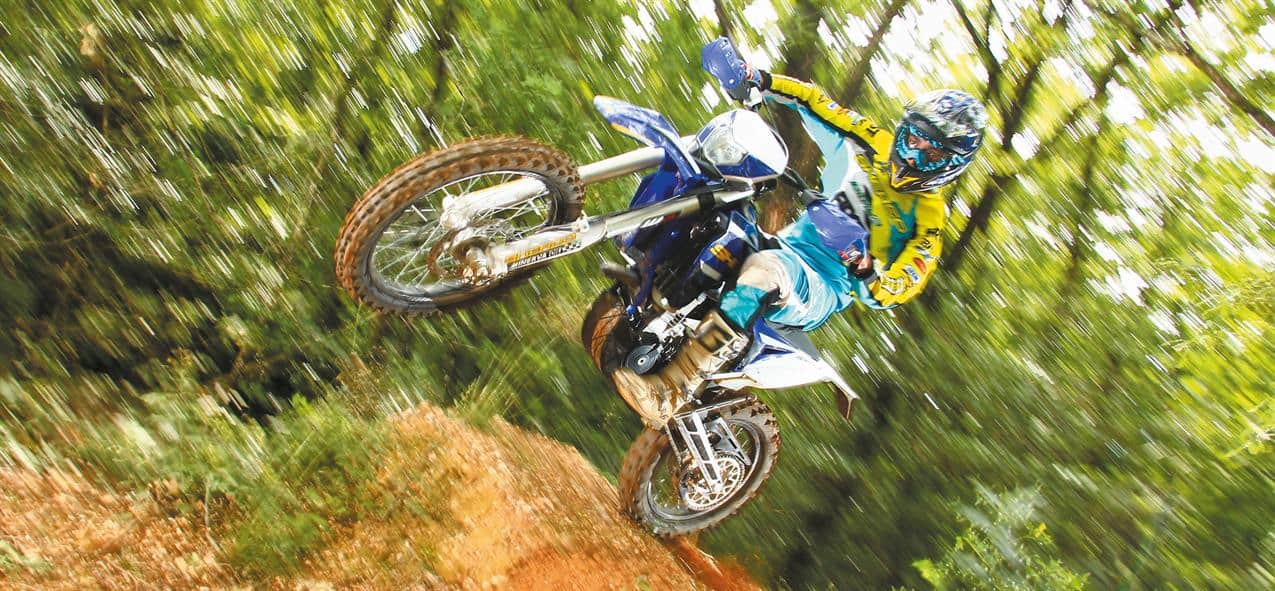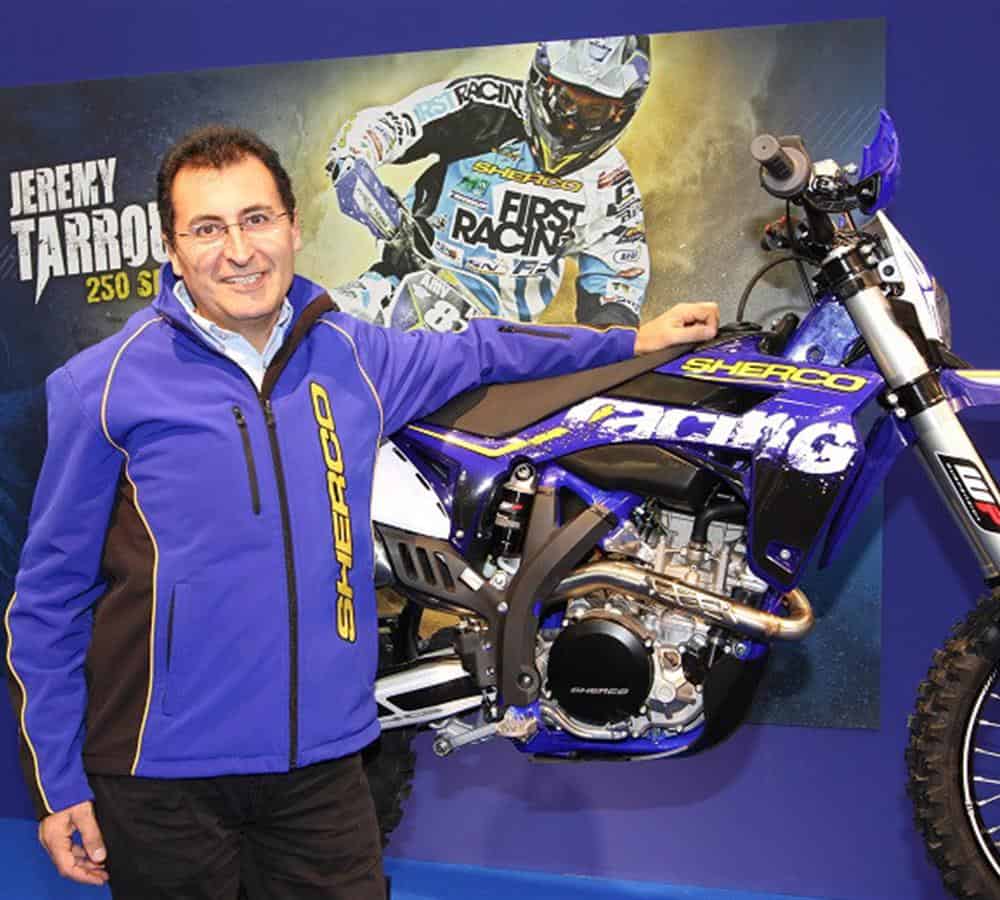Sherco revealed all their 2015 models two and four-stroke models. RUST was invited to try them out for themselves…
Sherco are learning fast. We know that much by the way their enduro range has evolved so rapidly from its humble one-bike origins in 2004. We also know that from the way this small firm based in the south of France, managed to steal two day wins at this year’s Dakar Rally from under the noses of HRC Honda and KTM… using a bike powered by their new 450 motor they were debuting at this launch.
So they’re getting faster on track, but also in terms of speed of manufacturing. Last year saw a significant hike in terms of production, with a similar increase planned for this year. It’s not a wild lunge for expansion though, Sherco’s boss Marc Teissier says their focus is on improving quality and performance, plus ensuring that the customer-dealer-importer-factory relationship is fully functional. ‘Little steps’ was Monsieur Teissier’s catchphrase, ‘take too big a leap and you risk a fall…’
What’s new for 2015?
We know Shercos are pretty well made and they’re certainly good looking bikes. But more than that they’re bikes with a real sense of difference to the existing establishment. The big news at this launch was the brand new 450cc four-stroke. It could have been with us a year ago but with the new two-strokes to launch, Sherco held it back a year. So it’s had three years, not two, in development and has provided those two Dakar wins. And they’ve clearly spent the time wisely making sure this is a fast and robust racer as the class dictates.
Sherco were shy about giving out too many details about the new motor. It is quite obviously a very compact unit and whilst it weighs a claimed 32kg it honestly looks smaller. And given that it’s a DOHC engine the head is surprisingly compact, if you didn’t spot the cam end caps you’d think it was an SOHC design. Perhaps part of that is the clever chain and gear-drive to the camshafts. The motor also borrows from the now tried and tested tech in the 250 and 300cc four-strokes, using the same Synerject fuel injection system. And there’s been a real focus on maintaining common components across the model range, so parts like fuel tanks and bodywork are common to all. Nonetheless the size of the 450 is bigger, with the steering head a full 20mm forward of that on the smaller chassis. That’s probably a good thing.
Don’t forget, you can click on any of the pictures in this article to see the full frame!
Meanwhile the 250cc four-stroke now gets Synerject fuel injection – identical to the 300/450 – where previously it had a Magnetti/Marelli unit. Likewise the gearbox shift mechanism had also been standardised across all of the four-strokes.
For the two-strokes (which were new in MY2014) Sherco have fine tuned the ignition and power-valve to find a little more power in the bottom to mid-range, which they say makes the power delivery more linear and easier to use.
All the Shercos in the range come with dual engine mapping – hard and soft – but it’s on the two-strokes where the biggest difference is felt. This is because unlike most manufacturers who simply offer an altered ignition curve, on the Sherco it also affects the opening of the power-valve. So for instance on the 300 the hard map makes for a peak power output of 47hp, but in soft mode this is capped at 38hp. That offers much more progressivity and traction in technical going. On the four-strokes where only the ignition curve can be altered, the difference in maps accounts for around 3hp, but it’s still noticeable.
Track Time
The test venue was set high in the hills, an hour north of Toulouse. Sherco had done a damn good job – offering a near perfect test track with a 10-minute loop that featured great hill climbs and descents, technical woods riding, open blasts, a bit of motocross track, even grassy fields – a bit of everything really. It was clay based, and after a night of heavy rains it was slick and grip-less to start with (which took the edge off the photo-session, alas) but with warm temperatures arriving and plenty of riding going on, it dried-up nicely later.
The bikes didn’t disappoint. It’s worth noting right from the start, that we rode the ‘R’ spec machines. Like Gas Gas do, Sherco make both a standard model and a slightly up-specced version of each bike (the R version), which feature WP forks in place of the standard Sachs, and it’s these models the UK importers Malcolm Rathmell Sport will bring in. As it was, the WP units offer plush damping without quirks or shortcomings, in fact the handling across all the range would prove excellent and the WP’s performance must account for a part of that.
So starting with the two-strokes, given the slick going early on, the ability to swap to the soft map helped a bunch with the tricky hill climbing which featured deep ruts, tricky rooty 90-degree turns and rock steps. Powering up these and finding grip on the 300 was a tough ask, but with the soft map setting, it was a 100% guaranteed outcome every time. When you hit the open stuff or the motocross track you needed to swap to the hard map pretty quickly – something that can be done in motion with just a sweep of your right thumb – as the soft map is definitely a bit too trialsy at times, holding the power valve shut. Once on the hard map the two-strokes rip along sweetly.
We’ve ridden the 250SE-R before and we know it’s a weapon. The new engine mapping hasn’t hurt either it or the 300 one bit and, as Sherco suggested, the character is definitely very linear. Like so many of the latest two-strokes the emphasis has been on creating a manageable power delivery. So there’s not quite the feeling of coming onto the pipe in the way we might recall from days gone by, but in slick going that can be no bad thing. The two-strokes definitely deliver their performance in a thoroughly modern way.
When it comes to the thumpers the 250 and 300 (SEF-R) are just sublime. There’s more than a hint of the old Husky TE250 about them, the way the engines rev like mini Formula One units – and the noise they make is just intoxicating. So much so that it’s full gas on these babies just so you can enjoy the awesome sound track. But both bikes can rock the tight, slow stuff equally as well. On the same steep tricky hill climbs the smaller four-strokes were more than happy to lug their way up using low revs with just the odd dip of the clutch to keep them happy. So they do the nadgery stuff as easily as the fast – but it’s the fast that make both feel so alive, so responsive, they bring out the racer in you, however dormant that might be.
The 450 was – as expected – the daddy. Sherco have definitely thought long and hard about the power delivery they wanted it to have, and gone for a long linear kind of performance. It’s noticeably less punchy than a KTM 450EXC; the pull from the bottom isn’t so sudden and the top end isn’t so mad either, but it drives from bottom to top without a step and that’s good. Sherco say they wanted their 450 to be a rideable machine and it looks like they’ve achieved their aim. It’s a 450 that you can boss around, rather than it controlling you.
With a big bike that’s pretty handy, because with 50+ horsepower things can get pretty nasty if you don’t have control. The Synerject fuel injection seems to be a damn good choice too. Both Sherco and Beta say they like the adjustability on the engine braking that this system brings and that was especially noticeable on the 450 – cogging down the gears after a long blast across a grass field the rear would track gently sideways as the bike was leant into the following turn, but would never lock up. It’s a bit like the way slipper clutches have revolutionised sportsbikes over the past decade. And it seems this feature could really help both in terms of control and in saving time on the special tests.
As I mentioned earlier, the handling across the entire range was excellent and pretty neutral. They’re a touch less nervous than a KTM – there’s a small hint of trials in the mix as befits Sherco’s origins – but they’re definitely accurate at all times and there’s a confidence-inspiring feel about what the front end is doing. And despite similar dimensions to most other enduro bikes, they do feel that little bit smaller all round, which of course makes them easier to ride.
The 250/300 four-strokes stole the show, though. On these two you can seriously go gonzo on the track and trail, they instill that much confidence. Of the two, the 250 provides the more intense hit, that keeps you coming back for more and more. But the 300, with that little bit more motor is clearly the more versatile of the two. It’s funny we used to find the same thing with the old Husky TE250 and 310 – it was the 250 which offered the most fun, the 310 was the sensible choice.
The new 450 is good as well. Back in 2004 Sherco’s old SOHC 450 won the RUST shootout that year not by dint of being the fastest machine, but because it was the easiest to ride – and thus the easiest to go FAST on. I suspect we might find a similar story with this new one, but that will have to wait until we can get them all together in a few months time.
After riding the smaller bikes you needed to be just that bit more deliberate on the 450 and on those descents… yeah, you feel the mass of the big bike when you’re trying to slow it down. The 450 isn’t really intended for us Europeans though – it’s designed to soak up big-bore sales in Australia and across the Americas (where they ride more open going). That said, as a comfortable and super-adept trail machine, yeah, it could do that job no problem. But for the majority of us, the 250/300 four-strokes are smack-bang on target.
The verdict
The French love enduro and that adoration is fully expressed in this range of svelte rapier-like machines. There is everything to like here; they look good, sound good and ride beautifully. Like Beta, Sherco have decided not to make KTM clones and that decision looks to be paying off handsomely. Okay, the two-strokes are not dissimilar to those from other manufacturers, but the Sherco four-strokes have their own feel, and look. I’m loving the deep blue, I’m loving the slim lines and most of all I’m loving those eager-to-please yowling four-popper engines. If you’re feeling a bit stale in your riding, you need to try one of these…
Speaking with Marc Teissier, the boss..
RUST: Marc, can you give us an idea of the ethos at Sherco?
MT: ‘At Sherco we want to make bikes with the performance to compete in the world championship but are also easy to ride for the customer. So we work a lot in development to make the feeling good for the rider. And it is not enough to make a bike that is good for production and makes money, we want to build excellence. I don’t want to make a Renault Twingo, I want to make a Ferrari! This takes time, energy, and it costs, but it’s the right way.
RUST: Last year you introduced the two-strokes, this year a new 450, what’s coming next?
MT: So this year we have the new 450 and it’s a possibility with this new engine to make a 350 also. But we don’t want to produce this at this moment because we don’t have the capacity to start with two models in the same year. We want to complete the range of models and year by year we finish the job. We work hard, but I like to put one foot in front of the other. If you make a big jump you can make a crash… So we are careful, to push the sales we need a good product, good quality and in support a good organization. Now it is not perfect but it is very near. We need to push for one or two more years but then we’ll have nearly finished the organisation.
RUST: There’s lots of talk of financial woes in dirt biking. Is Sherco financially secure?
MT: At Sherco we started to make money quickly in the first years (with the trials bikes) but then we invested in the enduros and now we are near to making money again. But we invest a lot, we have a good economic balance and at this time we are not out to make money. It’s important to invest to finish the Sherco house. So we make with maybe less money than the big company, but it’s a nice demonstration that not only big money makes nice things. It is the same for both the big company and the small, it is about one person with the muscle and the idea, and such an engineer is possible in Honda, in KTM in Sherco. In the last years in enduro we have seen Aprilia with much money make many noises, but in the end nothing. BMW with much money and in the end they give Husqvarna away because it is still impossible to make the job. It’s not just about money – it is the idea in the head.
RUST: You had amazing success at the Dakar Rally this year, scoring wins against Honda and KTM. Have those high-profile successes made a difference to Sherco?
MT: For the little company it is important to have balance. You can race world championship and people will buy the bike because they see the result. Dakar is good for the brand too. Good because if you want to make a bike for the world then Dakar is a big picture for the world. Dakar especially helped Sherco with the South American market. In the first week of Dakar Honda won two days, KTM won two days and Sherco won two days, and for the customer in South America it is then a choice of Honda, KTM or Sherco! This was good for the brand.
RUST: You’ve also stepped up production massively this last year. With such successes and an expanding range do you have plans to become the next KTM?
MT: No, I intend to carefully manage our growth. I don’t want at the moment for a capital company to come into Sherco, I like that it’s family, with this spirit. With a capital investor it would be a case of push push push, and sometimes you go very fast and after stop. It is better to advance not so quickly but never stop! And I’m happy with our progress. Not very happy because if you are too happy you stop because you think you’ve arrived. I’m every time never satisfied – it is possible every time to make it better. I think it is good to have this spirit, to never stop.

